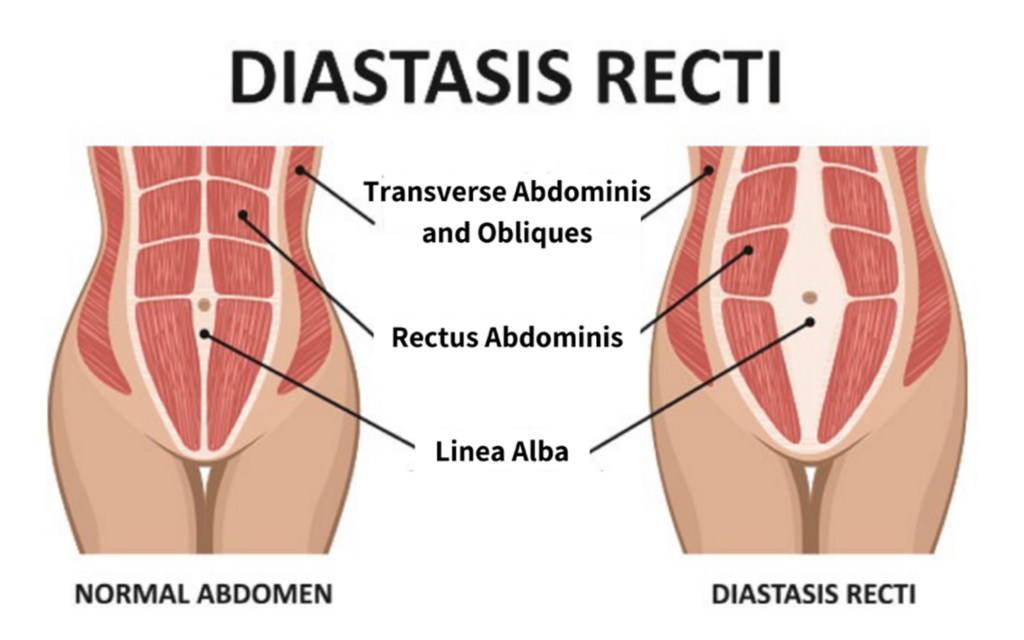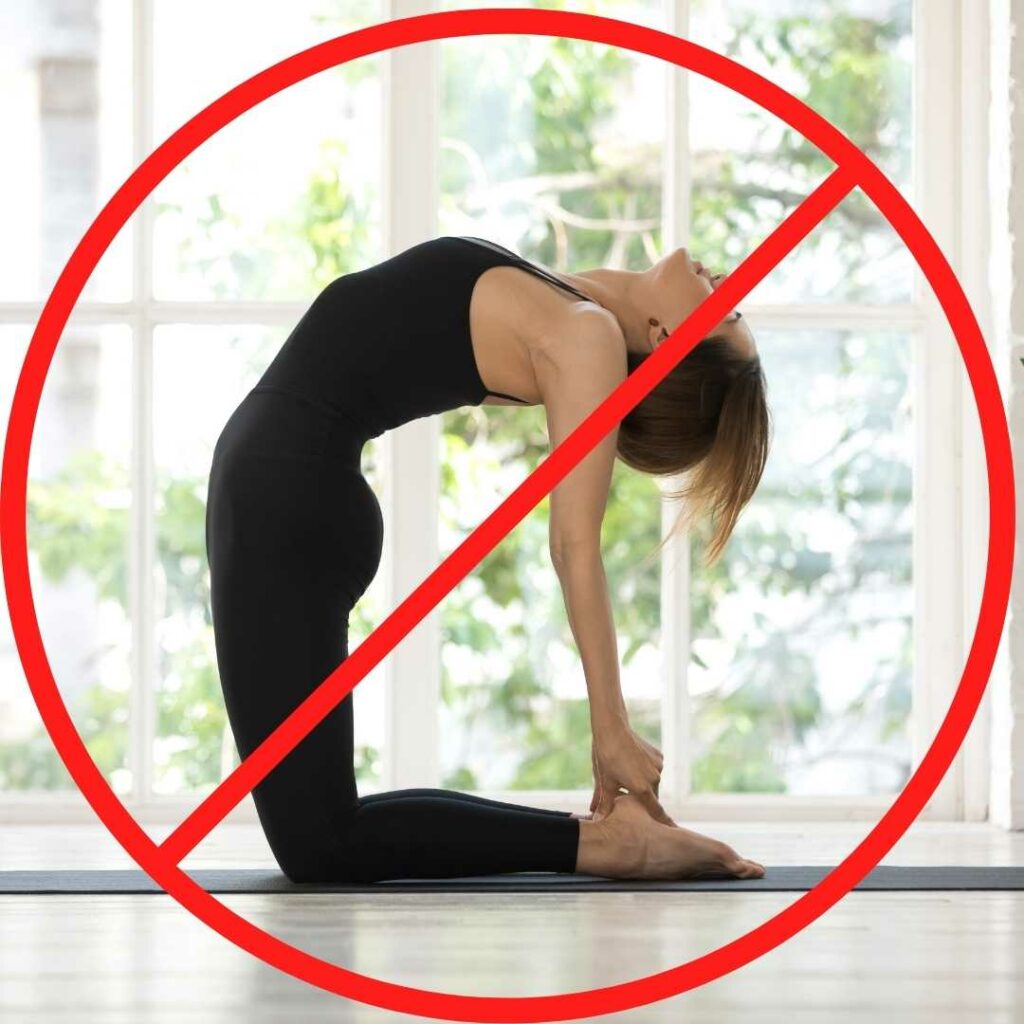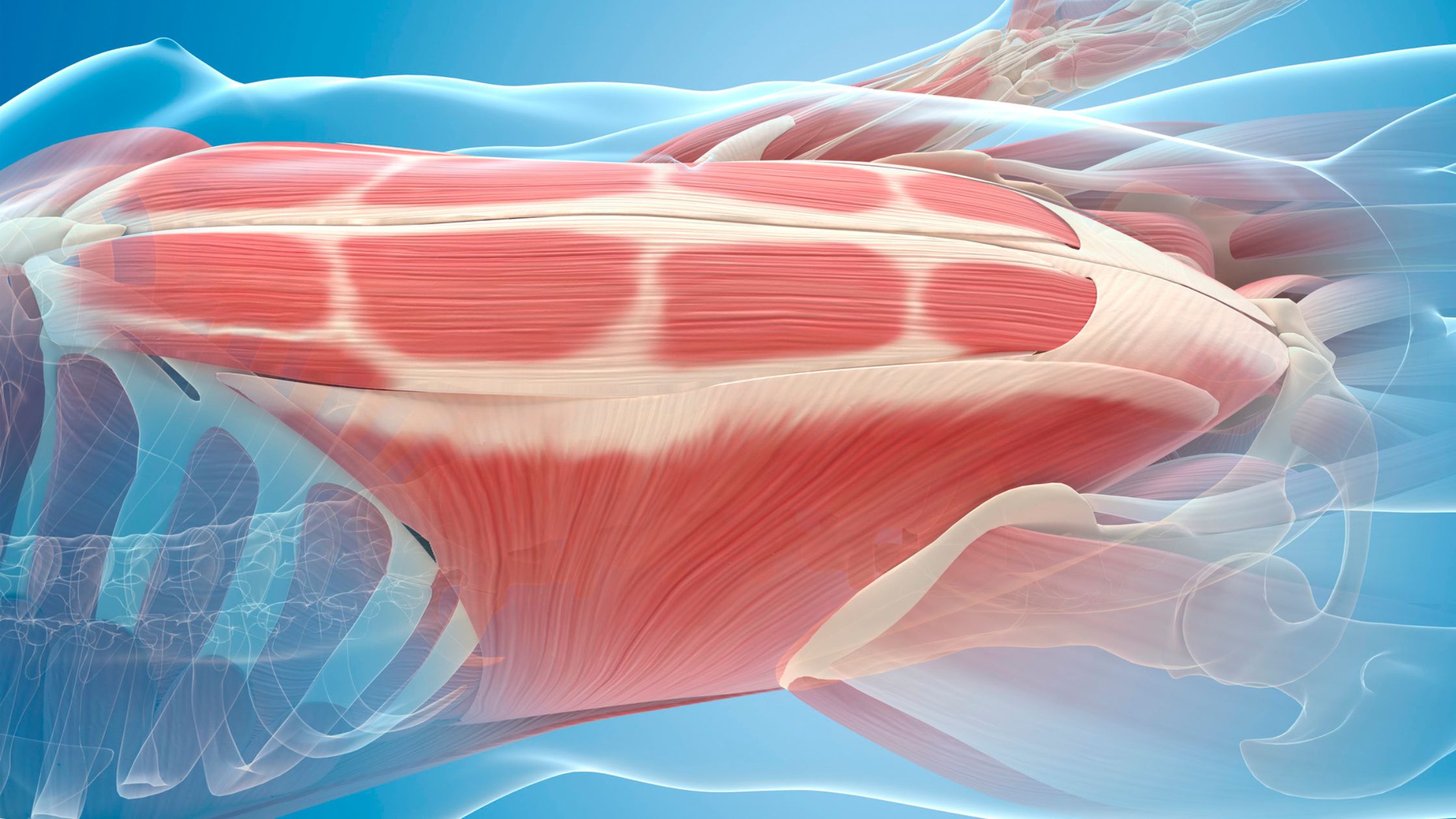Before we start, here is an important disclaimer: if you are currently being treated for pelvic floor dysfunction, I would encourage you to adhere to your clinician's guidance, and to run these suggestions by them first. Exercises for abdominal strengthening with diastasis recti often involve an increase in intra-abdominal pressure. Even though the approach to abdominal strengthening I describe is generally safe and appropriate for someone trying to manage diastasis recti, It may still be contra-indicated if you are managing a specific pelvic-floor dysfunction. Please, always defer to your licensed clinical care team.
In my last article on the subject, I discussed how diastasis recti can be caused by visceral fat, or the fat that accumulates around our organs. Once we understand that the abs are being pushed outwards by the abdominal contents, it makes sense that no amount of abdominal muscle strengthening will fix diastasis recti until we first deal with the root cause. For pregnant mothers, this is simpler – we need to wait until after the baby is born before we begin retraining the abdominal muscles to adopt the correct line of pull. But for people with increased visceral fat, the key is to heal the metabolism and lose this organ fat first. A great coach can help you identify the changes necessary, and make them sustainable through gradual behavior change.

Now, let’s assume you have already resolved whatever caused your diastasis in the first place. Either you have given birth, or made the changes necessary to lose organ fat, and you no longer have anything under your abdominal wall which is pushing your muscles out and to the side.
Some people in this situation will find that their diastasis recti resolves by itself when they resume exercise and an active lifestyle. But sometimes, the diastasis is persistent, as can be the case for individuals with connective tissue disorders, or for nursing moms with elevated relaxin levels. Regardless of the reason, if your diastasis is sticking around, we need to change our approach to exercise to give the body a chance to reorganize itself.
We need to reduce stretching forces on the Linea Alba
The linea alba is the thin strip of connective tissue that runs in between your six-pack ab muscles down the front of your torso, from sternum to pelvis. With diastasis recti, this tissue gets stretched from a thin line into a wide, flat band as the abdominal muscles pull apart from each other. The rectus abdominus (those 6-pack ab muscles) “want” to pull in the shortest path between your ribs and pelvis, and if they have to stretch around a mass in the belly, this will cause them to pull away from each other.
What we need to do is only ask the abs to pull straight up and down, and not out to the side at all. The way to do this is by getting the ribs and pelvis close together. In this fully “crunched” position, it is easy for the ab muscles to pull straight up and down. Conversely, if we have an arched or extended low back (think: flared-out ribs), and we try to contract our abs, they may fall into their old bad habits by taking the wide path down from ribs to pelvis, stretching the linea alba out in the process.

Shorten the abs to deload the linea alba.
What this means, in practice, is that some people will need to avoid full range sit-ups or any exercise that stretches out the abdominal muscles. At our personal training studio in Chesapeake, VA, we have our clients train their muscles through their full healthy range, causing them to lengthen and shorten. But with diastasis recti, the abs may tend to bow apart from each other when they are stretched out or elongated.
If we want to avoid this and eliminate any stretching forces on the linea alba, we need to keep the ab muscles short as we work to get them strong again. This means putting the muscles in very short lengths, and then working them isometrically, or putting them under tension and just holding the tension without elongating and shortening.
This shortened position for the abdominal muscles is frequently taught in pilates, physical therapy, and gymnastics. It is called the “hollow” position, and is cued by thinking of “tucking your tail.” What I want to do is give you a simple way to feel exactly how to put yourself in this correct position.
How to shorten the abs.
Start by getting down on the floor, and lying down on your back. Bend your knees and hips so that your feet are flat on the floor. What you probably feel is that your upper back and glutes are touching the floor, but the small of your back is either off the floor completely, or at least feels less pressure on it than your glutes and shoulder blades.

What we want to do is press the small of our back into the floor by rolling our pelvis up towards our ribs, while bringing our ribs down towards our pelvis. This position is called spinal flexion, and it brings the ab muscles into their shortest position. And this “tucked,” “hollow,” or “round back” position for the spine is what we want to maintain during any ab training that we do, until the diastasis begins to resolve.
Crucially, this posture is one that we use for several key upper and lower body exercises at StrengthSpace. When we “crunch” on the lat pull down, or press our hips through the belt on the pullover or Gluteator, we are employing this position to strengthen the abs.
The Isometric Crunch: Training the abs in the shortened position.
Now that we know we need to keep the abs short, here is the foundational exercise that we can use to create deep muscular fatigue in the abdominals. We will perform the exercise isometrically, or without motion. Read this guide for a better understanding of how to select, dose, and progress your isometric exercises.
The crunch is ideal for abdominal strengthening for diastasis recti, because it can deeply fatigue the abs while keeping their length short. Deceptively difficult, you may find that even this beginning level exercise is enough to stand alone as your abdominal strengthening routine.
With your feet flat on the floor, your arms across your chest, and the small of your back pressed into the floor, first press your heels into the floor to lift your hips slightly off the ground. Then, lift your head and shoulder blades off the ground and into the crunched position. Now, simply hold this position for as long as you can.
Aim for a 90 second hold. If you can’t last one minute, regress the exercise by keeping your arms down by your sides, reaching towards your feet. If you can last more than two minutes, increase the difficulty by extending your arms over your head.
This exercises is a good starting point because it is scalable to your ability level, but is tough enough that even active people will find it challenging.
Conclusion
My hope is that you now feel equipped to engage in abdominal strengthening for your diastasis recti. In my next article on this subject, I will dig deeper into a comprehensive core strength progression you can engage in at home, which requires minimal equipment. This progression will address all ability levels, and will include modifications if you have neck or low back concerns that make it hard for you to use the isometric crunch.
I hope this has been helpful. Of course, if you are local to Chesapeake, VA, our introductory strength training program is a great way for you to learn the proper habits for safely build abdominal strength without exacerbating your diastasis recti.

